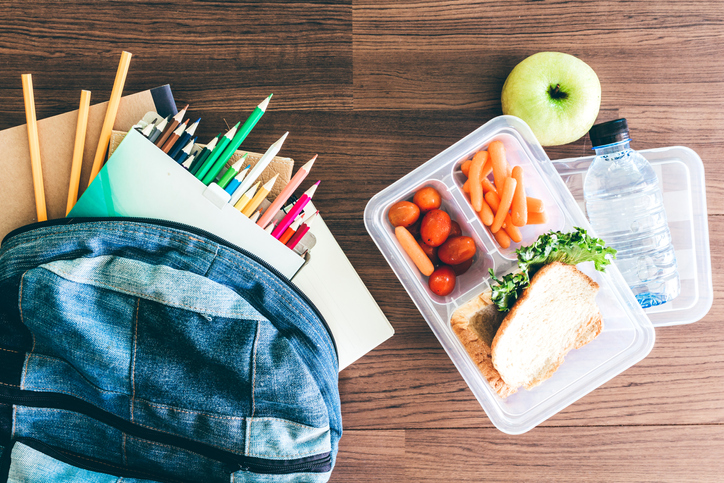Introduction to Stress in Children
Understanding Stress
Stress, characterized by feelings of being overwhelmed or unable to manage situations, is not exclusive to adults. Children, too, experience stress. Their emotions respond to different events in their life, much like adults. Yet, children often lack the necessary language skills to express their feelings, which can lead to a surge in stress levels.
Various factors trigger stress in children. This might include school-related pressures such as assignments or exams, social anxieties around peers, or major life events like moving to a new house. Moreover, in a digital age, children’s stress levels may be exacerbated by the constant availability and usage of technological elements such as computers, televisions, and mobile phones.
But, stress isn’t always a detrimental part of life. Just as a stress ball springs back into shape after being squeezed, children can also rebound from stress, learning resilience and problem-solving skills. Acute stress can motivate them to perform better, while also helping them understand their emotional responses and adapt to new situations.
Recognizing the Signs of Stress
Children, especially the younger ones, often struggle to express their feelings of stress and anxiety clearly. If there have been significant changes in a child’s life, such as relocating or welcoming a new sibling, parents should be particularly vigilant and watch for signs of stress in their child.
Some indicators of stress in children include:
- Stomachaches
- Headaches
- Behavioral changes
- Mood fluctuations
- Sleep disturbances, nightmares
- Difficulty focusing at school
- Irritability
- Strained relationships
- Decline in academic performance
- Reduced motivation
Even if a specific symptoms of stress isn’t obvious, your child might still be feeling stressed due to factors at school or other unknown sources.
Monitor their behavior and moods closely for any potential issues. Check in with teachers about your child’s school performance and observe their interactions with friends and family.
By understanding the nature and sign of stress, we’re taking the first steps to a healthier, stress-free childhood. In the coming sections, we’ll investigate into various techniques designed to help children handle stress effectively.
Sources and Impact of Stress
Before diving into the different stress management techniques for kids, it’s crucial to understand the main sources of their stress and its subsequent impact.
Common Stressors for Children
Stress in children often sprouts from a variety of sources. For instance:
- Academic Pressure: Children frequently experience stress from school works like exams, assignments, and the constant pressure to excel academically.
- Social Stress: Peer pressure, awkwardness, bullying, or difficulty fitting in can also engender a high level of stress in children.
- Family Issues: Events at home, including arguments, divorce, or financial problems can affect a child’s mental well-being.
- Over-scheduling: Being involved in numerous activities with no free time for relaxation or fun can also stress kids out.
Physiological and Psychological Effects of Stress
Like in adults, chronic stress can have detrimental physiological and psychological effects on children.
Excessive secretion of adrenaline or cortisol in the brain can impact a child’s behavior, leading to: loss of confidence, a need to move, as if preparing to fight, flee, or withdraw, aggressiveness and anger, lack of interest in playing, negative self-talk, etc. Pediatrician Catherine Gueguen explains that extended exposure to cortisol can disrupt metabolism and weaken the immune system, potentially causing chronic illnesses, autoimmune diseases, and significant harm to a child’s developing brain. Moreover, child psychiatrist Jean-Martin Bonetti points out that stress-related issues in children can manifest as sleep problems, various physical complaints, OCD, depression, and even suicidal thoughts.
Stress can also disrupt memory function, and some school challenges are entirely due to stress. Jeanne Siaud-Facchin said: “When anxious, it’s like having a scrambled channel without the decoder. It clouds the mind, preventing anything from entering or being recalled.” That means that a child can only excel in their tasks when they are free from the stress that “eats away” at their brain.
| Psychological Effects | How Stress Causes It |
|---|---|
| Mood Swings | Stress affects serotonin levels in the brain |
| Concentration Problems | Stress affects the cognitive abilities |
| Anxiety/Depression | Stress overloads the mind leading to anxiety/depression |
| Emotion Management Issues | Stress affects coping mechanisms |
| Physiological Effects | How Stress Causes It |
|---|---|
| Headaches | Stress causes muscles to tense, leading to headaches |
| Upset stomach | Stress affects digestion |
| High Blood Pressure | Stress causes blood vessels to narrow |
| Chest Pain | Stress can cause increased heart rate |
| Sleep/Eating Problems | Stress can disrupt established sleep/eating patterns |
Stress Management Techniques for Kids
Relaxation and Breathing Exercises
Harnessing the power of breath is a paramount strategy for mitigating stress in children. Practicing consistent breathing exercises can drastically improve a child’s mood and overall well-being.
Deep Breathing Techniques
Encourage your child to inhale “good” air and exhale “bad” air, imagining that it is carrying away any worries from their body during a stressful time.
Belly breathing can also be used to help your child relax or manage pain. Here’s how to practice belly breaths with your child:
- Have them lie down or sit in a chair with their feet flat on the floor.
- Place one hand on their belly and the other on their chest.
- Instruct them to take a deep breath in through their nose, allowing their lungs to fill with air.
- As they inhale, their belly should expand, while the hand on their chest remains still.
- When they exhale, they should shape their lips into an “O” and blow out all the air.
- They should notice their stomach flattening as their muscles tighten.
Colle à moi also offers sensory labels designed to aid with breathing. Known as stress strips, anxiety strips, and fidget strips, Colle à moi’s textured calming labels provide a therapeutic tactile experience. With their ingenious designs featuring breathing exercises, they promote concentration while reducing restlessness. These Fidget Labels are discrete, portable fidget toys that help to console and comfort. Additionally, they can be personalized with your children’s names, adding an extra touch of reassurance.
Guided Imagery and Progressive Muscle Relaxation
Guided imagery helps kids and teens use their imagination to change their thoughts and feelings by focusing on their senses. It’s like fun daydreaming. Pragmatically, it pairs effectively with progressive muscle relaxation. This muscle relaxation exercise involves tensing and releasing different muscular groups, promoting profound physical relaxation—a key ingredient in the recipe for healthy stress management.
- Look at videos or photos of a favorite place, or think of a favorite smell or memory.
- If using a photo or video, start with that. Otherwise, close your eyes.
- Imagine you’re in your special place, like the beach, a park, or your grandma’s kitchen. Choose a spot that makes you feel happy and safe.
- Use your imagination to explore every detail of this place. Think about what you see, smell, taste, hear, and feel.
- If you have a favorite scent, use it to help relax into your imagined place.
- Notice how your body feels in this place. You may feel your breathing slow and muscles relax.
- Once relaxed, open your eyes.
If kids struggle with this, describe the special place to them while they close their eyes and listen.
Physical and Creative Activities
Importance of Physical Activity
Being active benefits not only physical health but also mental well-being!
Getting out and moving can help balance their emotions and serve as an effective stress reliever, especially when they feel bored, tired, hyperactive, sad, angry, or nervous.. It doesn’t require much time or many supplies to get active; you can let your family’s imagination guide you in finding favorite activities. Spending time in nature is an excellent way to incorporate physical activity, benefiting both physical health and mental well-being. If your child has any medical concerns, consult your doctor to ensure the activities are safe. Once you have the green light, the possibilities are endless! You can try new family activities or enjoy ones you already love.
Art Therapy and Journaling
Art therapy involves creating art to express feelings, fostering emotional release. Similarly, journaling aids children in processing their emotions and experiences. Both techniques present a canvas for children to color with their emotions, redistributing pressure and alleviating stress.
You can encourage your child to start writing, drawing, or typing—there’s no right or wrong way to journal. If they’re unsure what to write about, they can jot down what they did today, something they’re looking forward to and why, or something they’re worried about and why.
Mindfulness and Meditation
Mindfulness and meditation aren’t merely introspective practices. They are transformative exercises that form an integral part of holistic stress management.
Mindfulness Exercises
Mindfulness exercises empower children to consciously experience the present, devoid of judgment. Studies attest that practicing mindfulness attenuates stress, fostering inner peace. Here’s a example of exercise : The Calm Jar (Glitter Jar). It’s a visual exercise to help children focus and calm down.
- Fill a jar with water and add glitter glue and glitter.
- Shake the jar and ask the child to watch the glitter swirl and slowly settle at the bottom.
- Explain that, like the glitter, their thoughts and feelings can swirl around, but they will eventually settle down.
Mindful Eating and Walking
Don’t perceive mindful eating and walking simply as tasks. Consider them opportunities for promoting stress resilience. The mindful walk exercise is an exercise to learn how to be present while walking.
Instructions:
- Take the child for a slow and peaceful walk.
- Ask them to pay attention to each step and feel their feet touching the ground.
- Encourage them to notice the sounds, smells, and sights around them without being distracted by thoughts.
Mindful eating for children involves teaching them to pay full attention to their eating experience. It’s about encouraging them to be present and engaged with their food, which can help develop a healthy relationship with eating. For example, you could minimize distractions during meals. Try to reduce screen time like TV or smartphones. This helps children focus on their food and the eating experience.
Reducing Screen Time to Alleviate Stress in Children
One effective strategy for managing stress in children is to limit their screen time. In our digital age, the constant exposure to screens—from computers and televisions to mobile phones—can significantly contribute to increased stress levels. Extended screen time, especially on social media, can lead to overstimulation, disrupted sleep patterns, and a sense of constant comparison with others. This can exacerbate feelings of anxiety and stress in children.
By setting boundaries on screen use, parents can help their children unwind and engage in more stress-relieving activities. Encouraging time for physical play, hobbies, and face-to-face interactions with peers can offer children a more balanced routine. Additionally, reducing screen time before bedtime can improve sleep quality, further reducing stress.
Role of Parents and Caregivers in Stress Management
As parents and caregivers, we play crucial roles in managing and mitigating stressful situations that our children encounter. With a nuanced understanding of stress and its triggers, we can provide stability, reassurance, and most importantly, well-being in our children’s lives. By being a role model, we demonstrate how to navigate stressful situations, helping our children develop effective stress management strategies.
Supporting Through Understanding
Understanding is the first step to effective stress management. As previously mentioned, stress may manifest as changes in mood, behavior, and physical health. Children might react differently to events, show excessive worry, or experience changes in appetite and sleep disturbances during difficult times.
Supporting a child through anxiety starts with validating their feelings. Letting them know it’s okay to feel stressed or upset helps normalize these emotions. Encourage them to express their feelings and reassure them that their emotions are a natural part of the human experience.
Encourage your child to talk openly about their problems and feelings. Talking about issues is one of the most effective ways to manage stress. Even if your child can’t pinpoint what’s bothering them, your encouragement to talk can make a difference. Let them fully express their thoughts and emotions before offering solutions or opinions.
Creating a Supportive Environment
Building a supportive environment promotes a child’s well-being and aids in managing stress, creating a safe space that fosters positive feelings. Here are a few suggestions:
- Maintain a healthy routine: Regular sleep, nutritious meals, and physical activity are key to a child’s well-being. They contribute to overall mood and health, helping to regulate stress levels.
- Encourage relaxing activities: Activities like deep breathing, reading, drawing, or playing with a stress ball can divert a child’s attention from stressful situations. These activities promote relaxation and a sense of calm when a child feels overwhelmed.
- Stay aware of lifestyle pressures: Be attentive to the external pressures children face daily, including academic and social stress. Regularly discussing these pressures can help children navigate difficult situations.
Professional Help and When to Seek It
Switching gears, a pivot point in the child’s stress management journey is acknowledging when professional intervention becomes necessary.
Identifying the Need for Professional Help
Identifying the need for professional help for stress in children involves recognizing persistent and severe signs of distress that go beyond what parents can manage. While bonding activities, a balanced diet, and adequate sleep can alleviate mild to moderate stress, excess stress from challenging situations may require professional intervention. Persistent mood swings, a significant drop in academic performance, or noticeable changes in sleep and appetite patterns act as red flags. Chronic stress, if left unchecked, can lead to negative feelings, elevated blood pressure, hormonal imbalances, and weakened immune systems, predisposing children to frequent illnesses and emotional despair, potentially leading to depressive symptoms.
Parents must understand that seeking professional help is not an admission of failure but a proactive decision to prioritize their child’s well-being and equip them with effective tools to combat stress. Consulting a pediatrician or mental health professional can provide the necessary support and strategies for managing these challenging situations.
Resources and Guidance for Seeking Help
When the time calls for professional support, a multitude of resources are at one’s disposal. Start by exploring the school’s resources—many schools invariably offer counseling services or at least can provide information on where to seek them.
When seeking external help, consult pediatricians for recommendations. They are often looped into a network of child psychologists and counselors who specialize in stress management strategies for children and mental health services. Another notable resource for guidance is online platforms, offering approved recommendations of reputed psychologists tailored to suit specific needs.
Lastly, don’t overlook support groups. It’s a common misconception that such groups exist only for adults. Reassuringly, they’re increasingly found focusing specifically on assisting children and teenagers in combat negative stress.
These steps aid in initiating the quest for professional help. Rest assured, the journey towards well-being may be complex, but it’s a worthwhile try to ensure a stress-free future for children.
Here are some resources in Quebec for managing stress in children:
- Association des pédiatres du Québec: Provides information and resources on children’s mental health.
- Centres de santé et de services sociaux (CISSS): Offers psychological support services and workshops for children and families.
- La Fondation du Dr Julien: Provides programs and resources to help children and families cope with emotional challenges.
- Psychoéducation Québec: Offers psychoeducation services and resources for managing stress and emotions in children.
Conclusion
In conclusion, effectively managing stress in children is a multi-faceted endeavor that requires understanding, patience, and a comprehensive approach. By recognizing the signs of stress, implementing various stress management techniques, and fostering a supportive environment, we can help children navigate their emotional challenges. Additionally, seeking professional help when necessary ensures that children receive the targeted assistance they need. By taking these steps, we can empower young minds to handle stress healthily and proactively, paving the way for a brighter, stress-free future.
Additional Resources
- Support a child who is living stress or anxiety
- Info‑Social 811 telephone psychosocial consultation service
- LigneParents (in French only)
- Find out the mental health support resources available according to your needs or near you.







